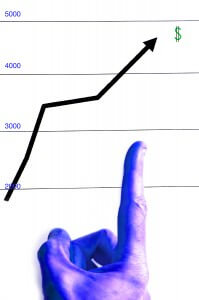 Market forecasts have a bad reputation. Ask anyone who survived the last tech bubble, which was preceded by years of “hockey stick forecasts” for just about every technology-related market you can imagine. A lot of people, including investors, found out the hard way that very few markets grow from zero to billions of dollars in under 5 years.
Market forecasts have a bad reputation. Ask anyone who survived the last tech bubble, which was preceded by years of “hockey stick forecasts” for just about every technology-related market you can imagine. A lot of people, including investors, found out the hard way that very few markets grow from zero to billions of dollars in under 5 years.
Even if we put aside self-serving forecasts that are patently optimistic, many market forecasts are based on a rather murky mix of supply-side assumptions, total available market estimates, and compound annual growth rate hunches. In some markets, the forecasts rely heavily on input from suppliers to the market (for example, analyst firms ask PC manufacturers how many units they expect to ship).
Forecasting mature markets is a bit more reliable. Markets where there are years of historical data to work with. In these markets, which are typically consumer goods related, analysts can use actual data analysis to generate the forecasts. Great.
But new markets or those with volatile conditions? For such markets, growth forecasts are basically a guessing game. Without the benefit of historical data, at some level the analyst is making big assumptions that form the forecast’s foundation.
So before you either purchase a market forecast report or hire a firm to develop a market forecast, think carefully: do you want a forecast for PR sound bite purposes or actual business planning? It’s a legitimate question. If you just want some “objective” data for use with press, rigorous attention to the details is optional.
But if the data will be used for real decision making (such as planning sales staff expansion, pricing strategies, and so on), I recommend you do a few things:
- Ask for documentation about the key assumptions used. Some analysts may consider certain details “proprietary,” and that’s ok. But at minimum they should be able to talk about key assumptions related to demand drivers, pricing trends, and even “wild cards” (items that could cause the forecast to be adjusted up or down in the future). In fact, a recent Forrester blog by Ed Kahn recently addressed this as well, and points out the importance of a client having access to the analyst’s hypotheses.
- Do your own sanity check. If you see a forecast that seems too high, or too low, sanity check against other data sources. For example, if you see a forecast for a B2B product that projects a certain dollar volume of purchases per year, see if it makes sense given the total number of businesses likely to be buying. It’s not perfect, but it gives you something to work with. In most markets there is at least some contextual data that can help.
- Use any forecasts you get, either from secondary research or an analyst firm, to create 3 scenarios: worst case, middle, best case. Creating three versions of a 5-year forecast is a great exercise because it forces you to examine all of the assumptions driving a market. I have led many such sessions myself, and I assure you it leads to lively, constructive conversations!










2 comments
I highly recommend that market researchers and market research consumers read “The Flaw of Averages: Why We Underestimate Risk in the Face of Uncertainty” by Sam L. Savage, available on Amazon for about $15. It’s a terrific blend of decision sciences and statistics. It’s not a magic bullet by any means, but it will force you to do forecasts differently, think about forecasts differently, and expect different things of forecasters.
Thanks so much Susan–I will check it out!